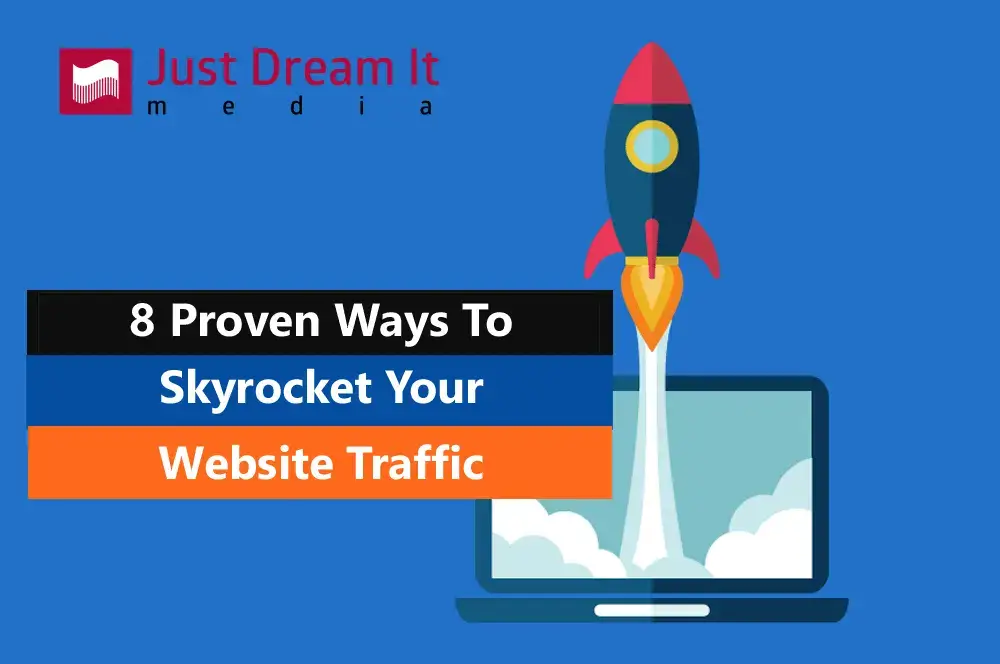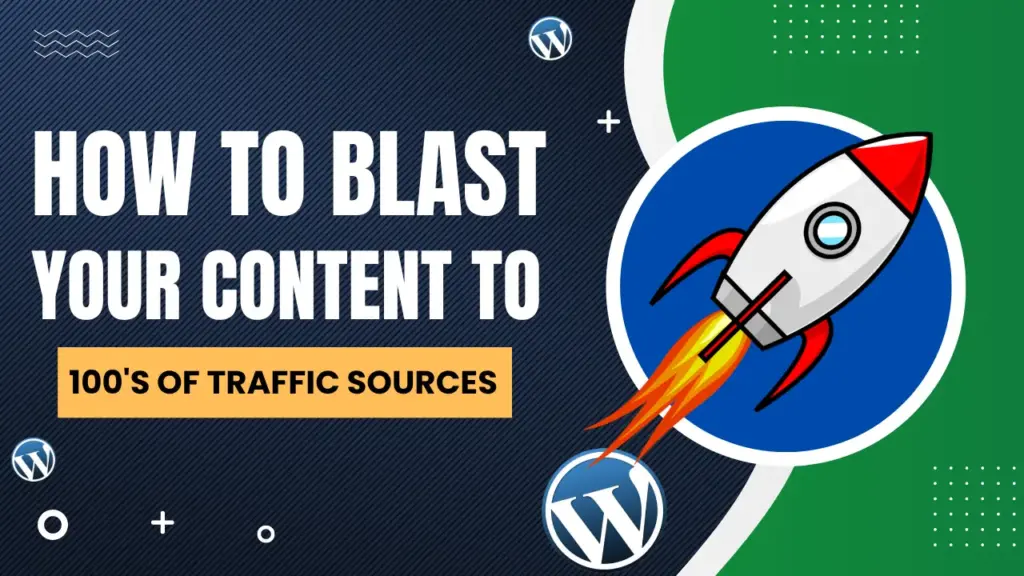Are you struggling to drive traffic to your website from social media? As a beginner, it can be daunting to navigate the world of social media marketing. With so many platforms, strategies, and tactics, it’s easy to get overwhelmed. However, with the right approach and techniques, you can effectively drive traffic to your website using social media.
In this guide, we will cover the essential steps to drive traffic to your website from social media for beginners. We will provide real-life examples and actionable tips to help you create a successful social media marketing strategy.
Understand Your Audience

Before diving into social media marketing tactics, it’s crucial to understand your audience. Your audience is the backbone of your social media marketing strategy, and without a deep understanding of their needs, interests, and preferences, it’s difficult to create compelling content that resonates with them.
To get started, conduct thorough research on your target audience. One of the best ways to do this is by creating a buyer persona, which is a fictional representation of your ideal customer. A buyer persona should include demographic information, such as age, gender, and location, as well as their pain points, interests, and goals.
For example, if you run a fitness website, your buyer persona might be a busy professional who wants to lose weight and improve their overall health. By understanding their pain points, you can create content that addresses their specific needs and interests. You can also leverage this information to create targeted social media ads that reach your ideal audience.
Choose the Right Social Media Platform
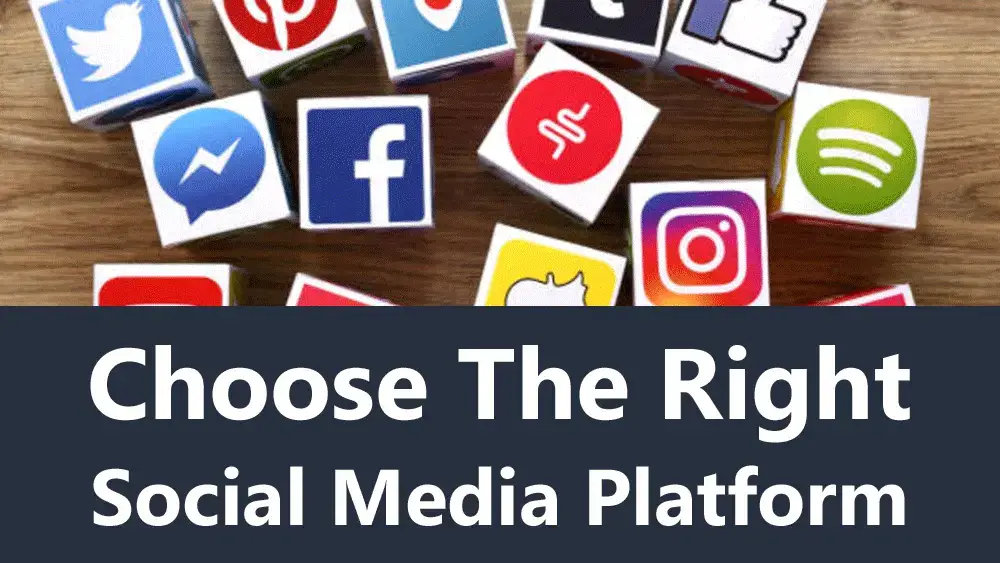
Not all social media platforms are created equal, and not all of them will be the right fit for your business. It’s essential to choose the right social media platform based on your audience and business goals. Each platform has its own unique features and audience, and the type of content that works best on one platform may not work on another.
Here’s a brief overview of some of the most popular social media platforms:
- Facebook: Facebook is the largest social media platform, with over 2.7 billion monthly active users. It’s an excellent platform for building brand awareness, engaging with your audience, and driving traffic to your website.
- Instagram: Instagram is a visual platform that’s ideal for businesses that rely on visual content, such as fashion, beauty, and food. It has over 1 billion monthly active users and is an excellent platform for building brand awareness and engagement.
- Twitter: Twitter is a fast-paced platform that’s ideal for real-time engagement and customer service. It has over 330 million monthly active users and is an excellent platform for building brand awareness and driving traffic to your website.
- LinkedIn: LinkedIn is a professional networking platform that’s ideal for B2B businesses. It has over 740 million members and is an excellent platform for building brand awareness, engaging with your audience, and driving traffic to your website.
- Pinterest: Pinterest is a visual platform that’s ideal for businesses that rely on visual content, such as fashion, beauty, and home decor. It has over 450 million monthly active users and is an excellent platform for driving traffic to your website.
It’s essential to choose the right social media platform based on your audience’s preferences and interests. For example, if your audience is primarily female and interested in fashion, Pinterest might be the best platform for you. If your audience is primarily male and interested in technology, Twitter might be a better fit.
Create Engaging Content

Creating engaging social media content is crucial for driving traffic to your website. The content you create should be compelling, informative, and relevant to your audience’s needs and interests. It’s essential to use visuals, such as images and videos, as they are more likely to grab your audience’s attention.

Here are some tips for creating engaging social media content:
- Use attention-grabbing headlines: Your headlines should be clear, concise, and attention-grabbing. Use power words to evoke emotion and make your audience want to click through to your website.
- Create a content calendar: A content calendar helps you plan your content in advance and ensures that you’re consistently posting high-quality content that resonates with your audience.
- Use visual content: Visual content, such as images and videos, is more likely to grab your audience’s attention than text-only content. Use high-quality visuals that are relevant to your content.
- Use hashtags: Hashtags are a great way to increase your reach and make your content more discoverable. Use relevant hashtags that are popular within your industry or niche.
Leverage Social Media Advertising

Social media advertising can be a powerful tool for driving traffic to your website. Social media platforms offer various advertising options, including sponsored posts, promoted tweets, and display ads. The key to successful social media advertising is to create targeted ads that reach your ideal audience.
Here are some tips for creating effective social media ads:
- Use compelling visuals: Your ad visuals should be eye-catching and relevant to your ad’s message. Use high-quality visuals that are consistent with your brand’s image.
- Target the right audience: Use audience targeting tools to ensure that your ads are reaching the right people. You can target your audience based on demographics, interests, behaviors, and more.
- Set a budget: Social media advertising can be costly, so it’s essential to set a budget that aligns with your business goals. Start small and gradually increase your budget as you see results.
- Monitor and analyze ad performance: It’s essential to monitor your ad performance and make adjustments as needed. Use analytics tools to track your ad’s reach, engagement, and conversions.
Engage with Your Audience
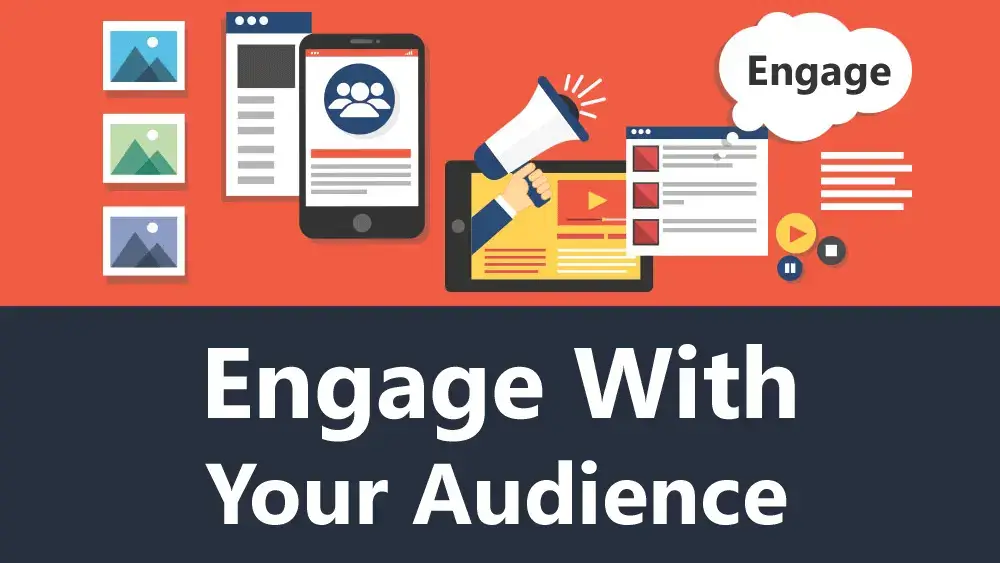
Engaging with your audience on social media is crucial for building relationships and driving traffic to your website. When someone engages with your content, take the time to respond to their comments and messages promptly. It shows that you value their engagement and are committed to providing excellent customer service.
Here are some tips for effectively engaging with your audience on social media:
- Respond to comments and messages promptly: Respond to comments and messages within 24 hours to show your audience that you value their engagement.
- Monitor your social media accounts for mentions and hashtags: Keep an eye on your social media accounts for mentions and hashtags related to your brand. It’s an excellent opportunity to engage with your audience and build relationships.
- Leverage user-generated content: User-generated content, such as customer reviews and testimonials, is an excellent way to build trust and credibility with your audience. Share user-generated content on your social media accounts and website to showcase your brand’s social proof.
Measure and Optimize Your Strategy
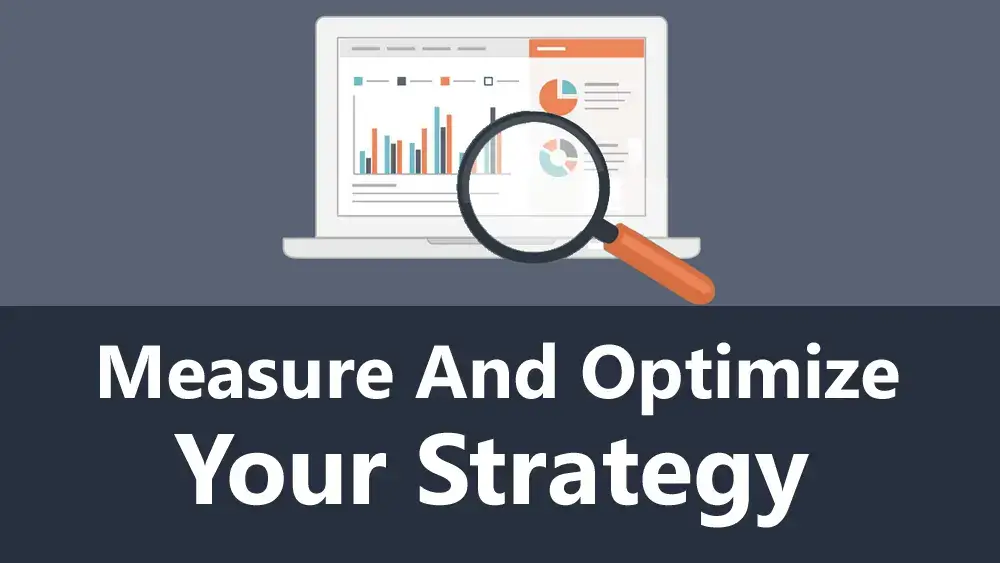
To drive traffic to your website effectively, you need to measure and optimize your social media strategy continually. Set goals for your social media marketing efforts, such as increasing website traffic or engagement, and track your progress over time.
Here are some tips for measuring and optimizing your social media strategy:
- Track your social media metrics: Use analytics tools to track your social media metrics, such as reach, engagement, and conversions. Use this data to identify areas for improvement and make adjustments to your strategy.
- Analyze your data: Analyze your data regularly to gain insights into your audience’s preferences and behaviors. Use this information to optimize your content and advertising strategy.
- Test and refine your strategy: Social media marketing is not a one-size-fits-all approach. Test different strategies and tactics to find what works best for your audience and business goals.
Driving traffic to your website from social media requires a structured approach and the right tactics. By understanding your audience, choosing the right social media platform, creating engaging content, leveraging social media advertising, engaging with your audience, and measuring and optimizing your strategy, you can effectively drive traffic to your website and achieve your business goals.
Remember to always put your audience first and create content that is valuable and relevant to their needs and interests. Use data and analytics to guide your strategy and make adjustments as needed. With persistence and a commitment to providing high-quality content, you can build a strong social media presence and drive traffic to your website.

Here are the main points and descriptions for the article on How to Increase Website Traffic with Social Media: The Ultimate Guide for Beginners:
The article, “How to Increase Website Traffic with Social Media: The Ultimate Guide for Beginners,” is a comprehensive guide for beginners looking to drive traffic to their website using social media. Here are the main points covered in the article:
1. Understand Your Audience: It’s crucial to understand your target audience before creating a social media marketing strategy. You can research your audience by creating a buyer persona that includes demographic information, pain points, interests, and goals. This information can help you create content that resonates with your audience and create targeted social media ads.
2. Choose the Right Social Media Platform: Not all social media platforms are created equal, and it’s essential to choose the right platform based on your audience’s preferences and interests. Facebook, Instagram, Twitter, LinkedIn, and Pinterest are the most popular social media platforms, and each has its unique features and audience. Choosing the right platform can help you reach your ideal audience and achieve your business goals.
3. Create Engaging Content: Engaging content is essential for driving traffic to your website from social media. Using visuals, creating attention-grabbing headlines, and using hashtags can help you create compelling content that resonates with your audience. Creating a content calendar can also help you plan your content in advance and ensure that you’re consistently posting high-quality content.
4. Leverage Social Media Advertising: Social media advertising can be a powerful tool for driving traffic to your website. Creating targeted ads, setting a budget, and monitoring and analyzing ad performance can help you create effective social media ads that reach your ideal audience.
5. Engage with Your Audience: Engaging with your audience on social media is crucial for building relationships and driving traffic to your website. Responding to comments and messages, monitoring your social media accounts for mentions and hashtags, and leveraging user-generated content can help you build trust and credibility with your audience.
6. Measure and Optimize Your Strategy: Measuring and optimizing your social media strategy is crucial for achieving your business goals. Tracking your social media metrics, analyzing your data, and testing and refining your strategy can help you identify areas for improvement and optimize your strategy over time.
By following these six main points, beginners can effectively drive traffic to their website from social media. The article includes real-life examples and actionable tips to help readers create a successful social media marketing strategy.

Here is an action plan based on the main points covered in the article, “How to Increase Website Traffic with Social Media: The Ultimate Guide for Beginners.”
1. Research Your Target Audience: Conduct thorough research on your target audience and create a buyer persona that includes demographic information, pain points, interests, and goals.
2. Choose the Right Social Media Platform: Based on your research, choose the social media platforms that align with your target audience’s preferences and interests.
3. Create Engaging Content: Use visuals, create attention-grabbing headlines, and use hashtags to create compelling content that resonates with your audience. Plan your content in advance using a content calendar.
4. Leverage Social Media Advertising: Create targeted social media ads that reach your ideal audience, set a budget, and monitor and analyze ad performance regularly.
5. Engage with Your Audience: Respond to comments and messages promptly, monitor your social media accounts for mentions and hashtags, and leverage user-generated content to build trust and credibility with your audience.
6. Measure and Optimize Your Strategy: Track your social media metrics, analyze your data, and test and refine your strategy over time to achieve your business goals.
By following this action plan, beginners can effectively drive traffic to their website from social media. It’s essential to be consistent and persistent with your social media marketing efforts and to always put your audience first. With time and effort, you can build a strong social media presence and achieve your business goals.

Here are 10 frequently asked questions with answers related to driving website traffic from social media for beginners:
1. How do I choose the right social media platform for my business?
Answer: Conduct thorough research on your target audience and choose the social media platforms that align with their preferences and interests.
2. What kind of content should I create for social media?
Answer: Create engaging and relevant content that resonates with your audience’s needs and interests. Use visuals, attention-grabbing headlines, and hashtags to make your content more compelling.
3. How often should I post on social media?
Answer: It depends on your audience and the social media platform you’re using. Aim to post consistently without overdoing it, and adjust your frequency based on your engagement metrics.
4. How do I measure the success of my social media marketing efforts?
Answer: Use analytics tools to track your social media metrics, such as reach, engagement, and conversions. Use this data to identify areas for improvement and optimize your strategy over time.
5. How do I create targeted social media ads?
Answer: Use audience targeting tools to ensure that your ads are reaching the right people. You can target your audience based on demographics, interests, behaviors, and more.
6. What are some tips for engaging with my audience on social media?
Answer: Respond to comments and messages promptly, monitor your social media accounts for mentions and hashtags, and leverage user-generated content to build trust and credibility with your audience.
7. How do I optimize my social media marketing strategy?
Answer: Test different strategies and tactics to find what works best for your audience and business goals. Analyze your data regularly to gain insights into your audience’s preferences and behaviors.
8. How do I create a content calendar for social media?
Answer: Use a content calendar tool or spreadsheet to plan your content in advance. Include important dates, holidays, and events, and create a mix of content types, such as blog posts, videos, and infographics.
9. What are some common mistakes to avoid when using social media for marketing?
Answer: Avoid being too salesy, posting irrelevant content, neglecting to engage with your audience, and using irrelevant hashtags.
10. How do I stay up-to-date with the latest social media trends and updates?
Answer: Follow industry influencers, read relevant blogs and publications, attend conferences and events, and regularly review the latest social media updates and features.
Conclusion
Driving website traffic from social media requires a strategic and structured approach. By understanding your audience, choosing the right social media platforms, creating engaging content, leveraging social media advertising, engaging with your audience, and measuring and optimizing your strategy, you can effectively drive traffic to your website and achieve your business goals.
Some key takeaways from the article include the importance of conducting research on your target audience, creating targeted social media ads, and engaging with your audience regularly. By consistently providing valuable and relevant content, building relationships with your audience, and analyzing your data regularly, you can optimize your social media marketing strategy and achieve success.
In conclusion, social media can be a powerful tool for driving website traffic and growing your business. By following the tips and strategies outlined in this article, beginners can create a strong social media presence and achieve their goals. Remember to always put your audience first, stay up-to-date with the latest trends and updates, and be persistent in your efforts. With time and effort, you can effectively drive traffic to your website from social media and achieve success in your business.


